Investigators from the Inspector General’s Office of the Interior Department, as was detailed here last week, found far more deception by the Point Reyes National Seashore superintendent and the park’s senior science advisor than has been reported in West Marin’s newspapers. Likewise getting almost no attention in the press is the chagrin investigators found among government scientists elsewhere in the West over the park’s misrepresenting research involving Drakes Bay Oyster Company.
 The federal investigation was launched in April 2007, the Inspector General wrote, shortly after oyster company owners Kevin and Nancy Lunny wrote to us requesting an investigation into the actions of Point Reyes National Seashore Supt. Donald Neubacher. Specifically, the Lunny family alleged that Neubacher had undermined and interfered with the family’s business and had slandered the family’s name.
The federal investigation was launched in April 2007, the Inspector General wrote, shortly after oyster company owners Kevin and Nancy Lunny wrote to us requesting an investigation into the actions of Point Reyes National Seashore Supt. Donald Neubacher. Specifically, the Lunny family alleged that Neubacher had undermined and interfered with the family’s business and had slandered the family’s name.
During his initial interview, investigators noted, “Kevin Lunny added that opponents of his shellfish operation were using faulty science to vilify him in the media as someone without regard for the environment.”
Here’s what Inspector General’s Report says about: (1) some of the park’s equivocations and misrepresentations; and (2), a variety of government scientists’ unhappiness with them:
“Our investigation determined that the Point Reyes National Seashore published a report on Drakes Estero,” where the Lunny family farms oysters, containing several inaccuracies regarding the source of sedimentation in the estero.
After receiving complaints from Corey Goodman [of Marshall], a neurobiologist, the National Park Service removed the report from its website on July 23, 2007, and two days later, it posted an “acknowledgment of errors” in its place.
 “Our investigation determined that in this report and in a newspaper article, Point Reyes National Seashore senior science advisor Sarah Allen had misrepresented research regarding sedimentation in Drakes Estero completed in the 1980s by US Geological Survey scientist Roberto Anima.
“Our investigation determined that in this report and in a newspaper article, Point Reyes National Seashore senior science advisor Sarah Allen had misrepresented research regarding sedimentation in Drakes Estero completed in the 1980s by US Geological Survey scientist Roberto Anima.
“In addition, we determined that she failed to provide a germane email message between Anima and herself in response to a Freedom of Information Act request [by Dr. Goodman] that specifically sought such correspondence.
“And [she] stated in a public forum [a May 2007 Marin County Board of Supervisors meeting] that the National Park Service had over 25 years of seal data from Drakes Estero when, in fact, that was inaccurate.”
As Jon Jarvis, director of the Pacific West Region, later said, the National Park Service has no data before 1996. Confronted with her untruth, Allen told investigators that while she was still a student 25 years ago, she had written a thesis on the estero, but admitted she possesses no data from her research.
“While Allen denied any intentional misrepresentation of Anima’s work, our investigation reveals that Allen was privy to information contrary to her characterization of Anima’s findings in the Sheltered Wilderness Report [which she wrote] and other public releases, and she did nothing to correct the information before its release to the public.”
 And where did this “information contrary to her characterization of Anima’s findings” come from? Both a fisheries biologist with the National Park Service and an environmental scientist with the California Department of Health Care Services.
And where did this “information contrary to her characterization of Anima’s findings” come from? Both a fisheries biologist with the National Park Service and an environmental scientist with the California Department of Health Care Services.
An oyster-company worker rinses off freshly harvested oysters on Wednesday.
In September 2006, investigators noted, the park wrote to the state Health Department, complaining that a “sanitary survey” of Drakes Estero by one of the department’s environmental scientists was “incomplete,” because it failed to say oyster feces caused major sedimentation.
“The letter,” investigators noted, “referenced Anima’s work and contained the following sentence, which Allen wrote: “Anima (1991) stated that the presence of the oysters and their feces were the primary source of sedimentation.”
 The Department of Health Services environmental scientist said he told Allen in a telephone conversation in approximately October 2006 that Anima had not tested any correlation between sediment and oyster feces in Drakes Estero.
The Department of Health Services environmental scientist said he told Allen in a telephone conversation in approximately October 2006 that Anima had not tested any correlation between sediment and oyster feces in Drakes Estero.
Nonetheless, the Sheltered Wilderness Report (which contained Allen’s discredited reference to Anima’s research, “was uploaded to the Point Reyes National Seashore website” three months later, investigators noted.
Why was the state Health Department’s information ignored? “Allen said she ‘vaguely’ remembered the Department of Health Services environmental scientist’s comment and that she was surprised by it,” investigators reported. She said she had “flagged a couple of pages (of Anima’s report )…. ‘But I just don’t remember more than that.'”
Allen used a UC Davis assessment of the estero, written by Professor Deborah Elliott-Fisk and herself, as the basis for a number of her allegations against the oyster company, but the professor was unhappy with how the assessment was cited.
 Allen, for example, had cited the assessment in blaming oyster growing for invasive species showing up in Drakes Estero. Dr. Elliott-Fisk, however, told investigators that although any introduction of an invasive species to the estero was “bad,” researchers could not definitely attribute the invasive species to the mariculture operation.
Allen, for example, had cited the assessment in blaming oyster growing for invasive species showing up in Drakes Estero. Dr. Elliott-Fisk, however, told investigators that although any introduction of an invasive species to the estero was “bad,” researchers could not definitely attribute the invasive species to the mariculture operation.
Park visitors enjoy an oyster picnic near the company shop.
“In another example of omission,” investigators wrote, “Allen did not include the following statement regarding the impact of oysters on sedimentation, drawn from the Drakes Estero Assessment, in either version of the Sheltered Wilderness Report:
“Although pseudofeces from the suspended oysters may contribute to the amount of organic matter below the racks, adding to the system, the amount of organic matter resulting from eelgrass decomposition is likely far greater considering how expansive and dense the beds are within the estuary, making any significant organic inputs from the oysters undetectable in this study.”
“Likewise… not addressed in the Sheltered Wilderness report,” investigators wrote, was a statement in the assessment that “a significant difference in the percent of organic matter in areas below and adjacent to the oyster racks was not detected.”
 Going even further in his criticism was John Wullschleger, a fishery biologist with the National Park Service in Fort Collins, Colorado. The fisheries biologist had provided “technical oversight” for the UC Davis’ assessment of Drakes Estero, and he didn’t consider the assessment thorough enough on some matters to be cited as authoritative on key claims in Allen’s Sheltered Wilderness Report.
Going even further in his criticism was John Wullschleger, a fishery biologist with the National Park Service in Fort Collins, Colorado. The fisheries biologist had provided “technical oversight” for the UC Davis’ assessment of Drakes Estero, and he didn’t consider the assessment thorough enough on some matters to be cited as authoritative on key claims in Allen’s Sheltered Wilderness Report.
Investigators reported, “Wullschleger told the Office of Inspector General he was concerned about the Drakes Estero Assessment report because it was “basically trying to make statements from things that weren’t statistically significant and say, ‘Well, they’re different. So therefore there must be an impact on the estuary.'”
He opined that the Point Reyes National Seashore was “aiming to find out a little too much in a relatively short period of time with a small amount of money” [by working mostly from] the Drakes Assessment report by Elliott-Fisk.
Biologist Wullschleger wrote Allen, “Given that [the assessment’s] sample sizes were small and that most results were not statistically significant, I was surprised that the conclusions section began with the relatively strong statement, ‘Oysters mariculture has had an impact on the marine fish and invertebrates of Drakes Estero.'”
 National Seashore Supt. Neubacher (right) repeatedly comes off in the Inspector General’s report as deceitful, even in petty matters. For example, The Point Reyes Light on May 18, 2006, published an article that cited a UC Davis assessment of Drakes Bay in concluding that oyster farming was not harming Drakes Estero, prompting Allen to write the Sheltered Wilderness Report as a rebuttal.
National Seashore Supt. Neubacher (right) repeatedly comes off in the Inspector General’s report as deceitful, even in petty matters. For example, The Point Reyes Light on May 18, 2006, published an article that cited a UC Davis assessment of Drakes Bay in concluding that oyster farming was not harming Drakes Estero, prompting Allen to write the Sheltered Wilderness Report as a rebuttal.
Once again careless with the truth, Supt. Neubacher told investigators that in writing the report, “the Point Reyes National Seashore was not attempting to counter The Point Reyes Light article but to get ‘objective information’ to the public.” Investigators, however, turned up correspondence between the Point Reyes National Seashore ecologist and Allen, as well as between Allen and UC Davis, showing that the Sheltered Wilderness Report was indeed written “to counter the conclusions drawn in the article.”
Despite the loud complaints from the National Seashore administration, The Light drew a reasonable conclusion in its article on the Drakes Estero Assessment, the Park Service biologist told Allen.
 The article, which also quoted Kevin Lunny (left), said the assessment showed that oyster growing “has no statistically significant effects on the estuary’s water quality, fish, and eelgrass.”
The article, which also quoted Kevin Lunny (left), said the assessment showed that oyster growing “has no statistically significant effects on the estuary’s water quality, fish, and eelgrass.”
On Feb. 6. 2007, biologist Wullschleger wrote Allen: “I can see how the oyster grower could point to this Drakes Estero Assessment report as evidence that their operation is not having an impact on the aquatic communities of the estero. After all, only one of the differences associated with the oyster racks was statistically significant.”
Despite this warning, investigators added, “three days later, on February 9, 2007, the Sheltered Wilderness report, which drew on the Drakes Estero Assessment report, was uploaded to the Point Reyes National Seashore’s website for the first time.” (You’ll recall that three months earlier the state Health Department had also informed Allen of allegations in the report that misrepresented research.)
 Even within the regional office of the Park Service, the National Seashore administration’s politicizing research bothered staff. Investigators reported, “A scientist for the Pacific West Region of the National Park Service opined that in the Sheltered Wilderness report, Allen and ‘probably her colleagues’ had drawn conclusions that simply cannot be sustained,” particularly since there was something a little bit sketchy about the [underlying Drakes Estero Assessment], “which ‘itself is overreaching.'”
Even within the regional office of the Park Service, the National Seashore administration’s politicizing research bothered staff. Investigators reported, “A scientist for the Pacific West Region of the National Park Service opined that in the Sheltered Wilderness report, Allen and ‘probably her colleagues’ had drawn conclusions that simply cannot be sustained,” particularly since there was something a little bit sketchy about the [underlying Drakes Estero Assessment], “which ‘itself is overreaching.'”
Anima of the USGS was even more upset. Contrary to how Allen had described his research, the scientist told investigators, his report never said that oyster feces was affecting the sedimentation in Drakes Estero but rather reflected that studies done elsewhere indicated that oyster waste was a factor in sedimentation in those bodies of water.
When interviewed, Anima agreed that as written in the Sheltered Wilderness Report, Allen’s use of the estimate of how much waste oysters could produce in a year seemed attributable to Drakes Estero even though he attributed that estimate to a study done in Japan [in 1955]….
Agent’s note: Both the article titled Coastal Wilderness: The Naturalist, which Allen co-authored in The Point Reyes Light in April 2007, and an editorial piece titled Save Drakes Estero published in The Coastal Post as a “collaborative effort” by various conservation groups in May 2007 refer to oyster feces as the primary cause of sediments in the estero.
 After reading those articles, Anima told Allen that his report did not state that he had “collected sediment cores from the estero,” as she had claimed, investigators said. Nor had he “identified pseudo feces of oysters as the primary source for sediment fill.”
After reading those articles, Anima told Allen that his report did not state that he had “collected sediment cores from the estero,” as she had claimed, investigators said. Nor had he “identified pseudo feces of oysters as the primary source for sediment fill.”
He said he was “ticked off” that she had misrepresented his findings that way.
Investigators noted, “Anima also contended that a partial quote Allen used in her report about oyster racks acting as a ‘baffle to tidal currents,’ was problematic because his report stated that the arrangement of oyster racks appeared to be serving as a baffle.
The investigators went on to comment, “Allen presented Anima’s quote about the racks acting as a baffle to tidal currents in a decisive manner, but Anima’s full quote on the subject is speculative.”
 Further, Anima’s statements that the effects of oyster mariculture on sediment in Drakes Estero required further study were omitted from both versions of the Sheltered Wilderness reports that were released to the public.”
Further, Anima’s statements that the effects of oyster mariculture on sediment in Drakes Estero required further study were omitted from both versions of the Sheltered Wilderness reports that were released to the public.”
Oyster workers use a boat to tow a barge of harvested oysters to the company dock.
Investigators wrote that “Anima said he let Allen know that he was ‘not happy’ with her portrayal of his research.”
According to him, she did not offer a “good justification” for inaccurately referencing his work, an investigator added. The USGS scientist “recalled that she tried to justify her actions by telling him about an agreement the National Park Service had with the oyster company.
“She explained that the current owner of the oyster farm wanted to extend his lease with the National Park Service when it expired and that the Point Reyes National Seashore was trying not to allow the extension of that lease.”
To be continued…
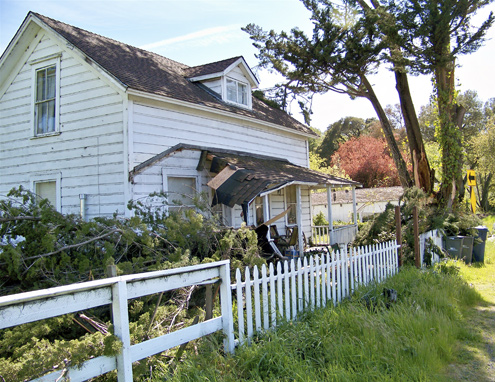 Windstorm destruction. The historic house where Dave Dinsmore lives on Nicasio Square has withstood more than a couple of blows over the years from speeding southbound vehicles. Coming at the end of a long straightaway into town, Nicasio Valley Road’s 90-degree turn in front of the house has sent nighttime speeders flying off the road and into the fence and porch. This week, however, the blow came from a gale that sent half a tree crashing down onto the porch’s roof. No doubt the resilient residence will recover from this blow too.
Windstorm destruction. The historic house where Dave Dinsmore lives on Nicasio Square has withstood more than a couple of blows over the years from speeding southbound vehicles. Coming at the end of a long straightaway into town, Nicasio Valley Road’s 90-degree turn in front of the house has sent nighttime speeders flying off the road and into the fence and porch. This week, however, the blow came from a gale that sent half a tree crashing down onto the porch’s roof. No doubt the resilient residence will recover from this blow too.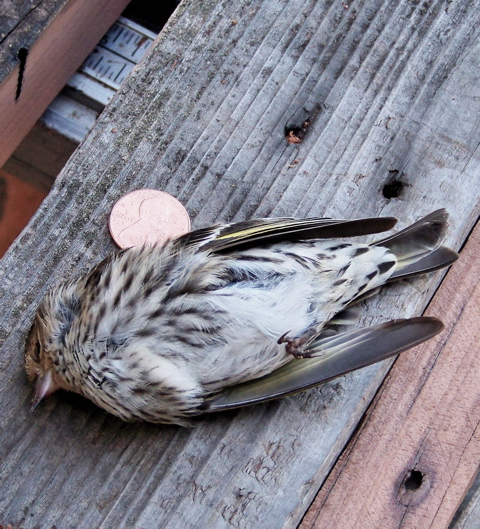

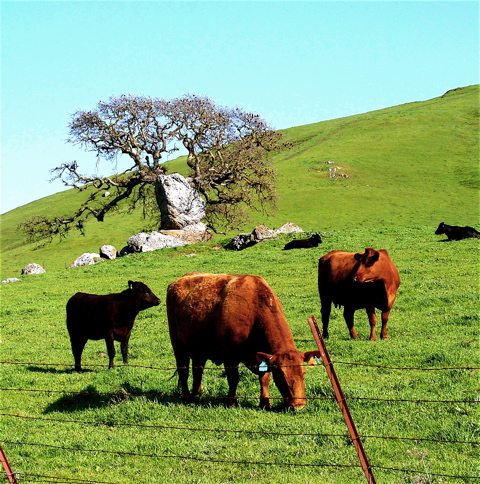
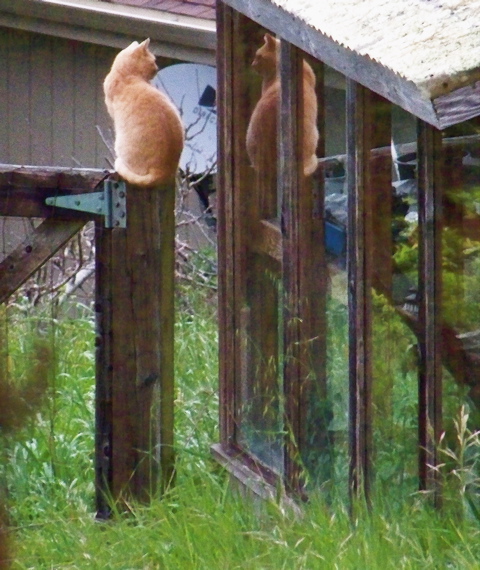 Reflected in the windows of neighbors Dan and Mary Huntsmans’ potting shed, a cat that could never have perched on their gatepost in this week’s gale could sit there nonchalantly last week.
Reflected in the windows of neighbors Dan and Mary Huntsmans’ potting shed, a cat that could never have perched on their gatepost in this week’s gale could sit there nonchalantly last week.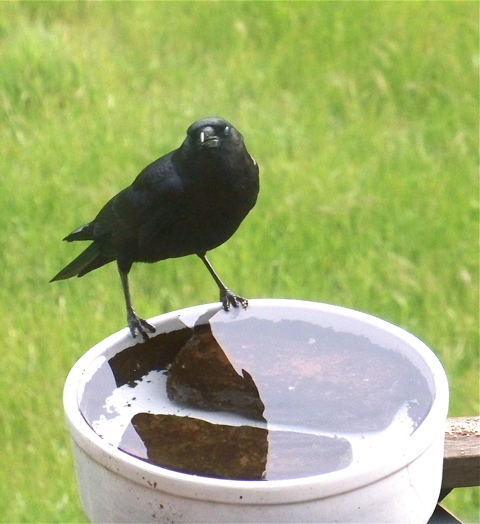

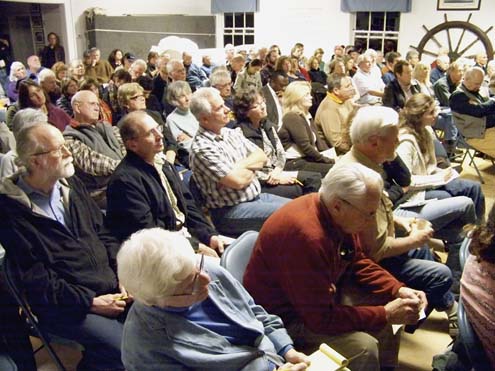


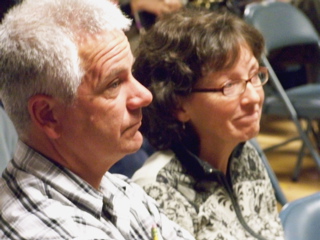 Closely following Friday’s discussion are oyster company owners Kevin and Nancy Lunny.
Closely following Friday’s discussion are oyster company owners Kevin and Nancy Lunny.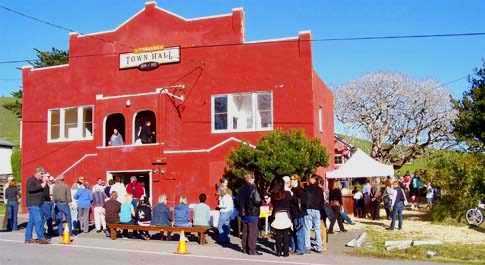





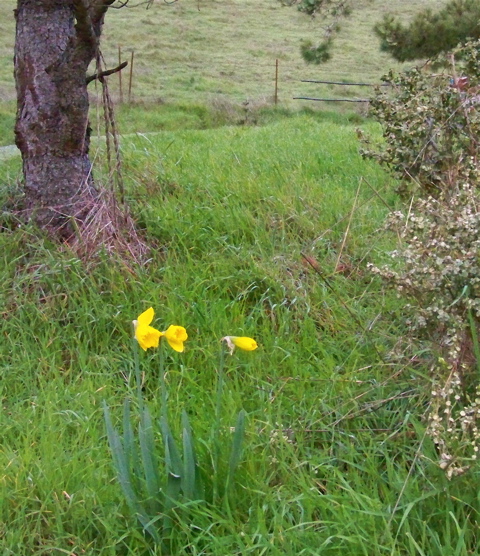
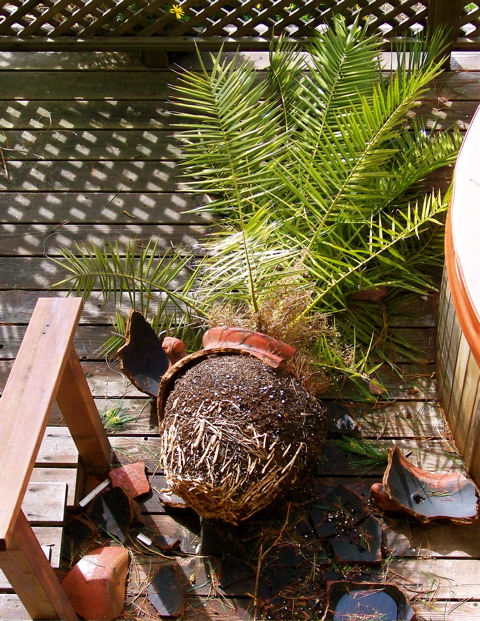 Worse yet, a terra cotta pot more than two feet high and holding a palm tree was blown over and busted on my deck. The last time wind busted a big pot at my cabin was just over two years ago, and it wasn’t this big. Finding a replacement large enough to hold the root ball required a trip over the hill Wednesday and a lot of driving around. After extensive searching, I was able to find exactly one that was big enough.
Worse yet, a terra cotta pot more than two feet high and holding a palm tree was blown over and busted on my deck. The last time wind busted a big pot at my cabin was just over two years ago, and it wasn’t this big. Finding a replacement large enough to hold the root ball required a trip over the hill Wednesday and a lot of driving around. After extensive searching, I was able to find exactly one that was big enough.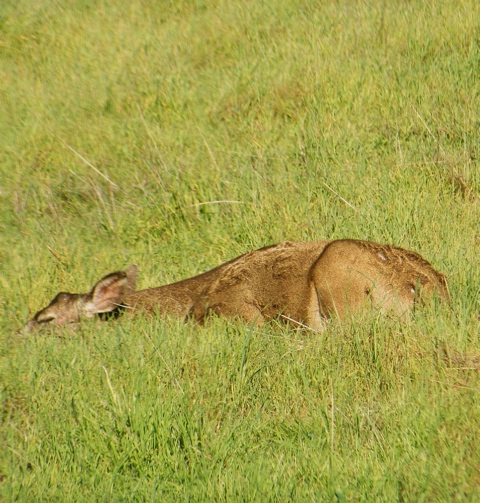
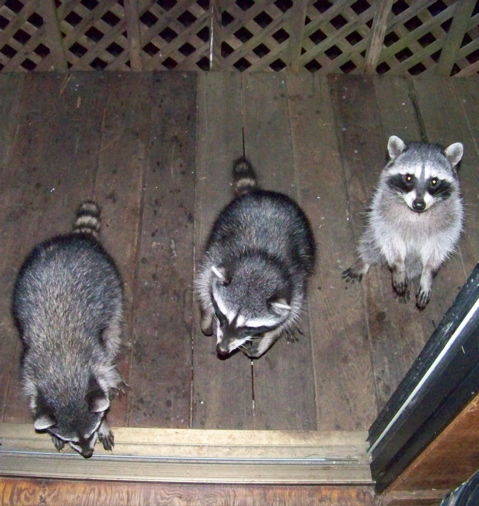
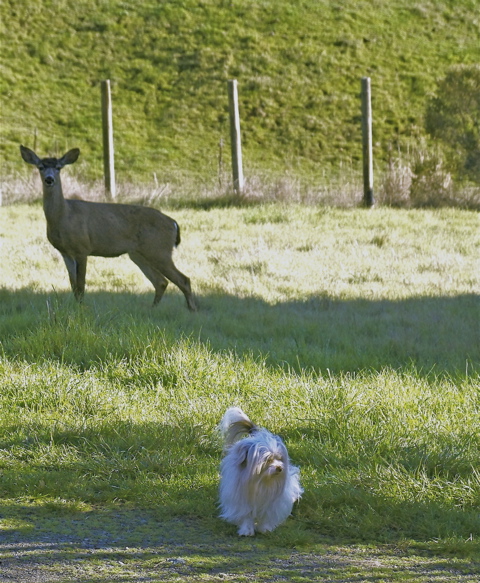

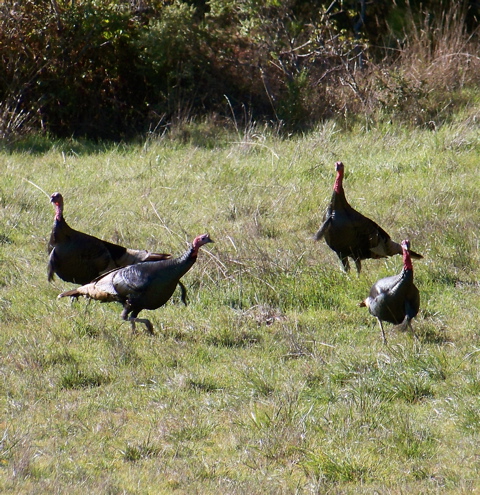

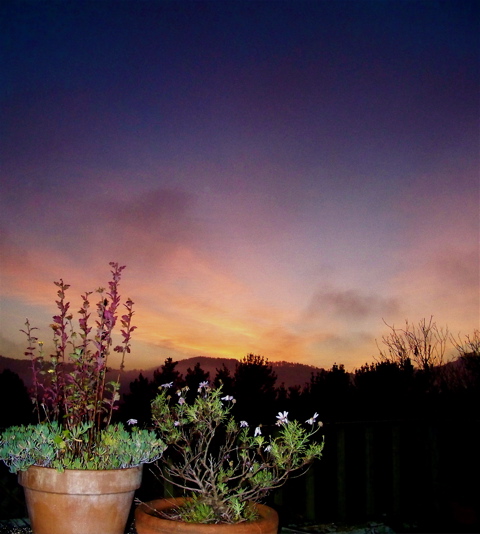



 Having changed its fare in the past year, Café Reyes in Point Reyes Station on some days now resembles a newspaper hangout.
Having changed its fare in the past year, Café Reyes in Point Reyes Station on some days now resembles a newspaper hangout. “According to a 2007 survey, local community papers are the primary source of information by a two-to-one margin over the next most popular medium,” television….
“According to a 2007 survey, local community papers are the primary source of information by a two-to-one margin over the next most popular medium,” television….



 In recent months, two problems in particular been been bugging me: white specks caused by shooting through windows and digital “noise,” tiny dots of color where there should be none.
In recent months, two problems in particular been been bugging me: white specks caused by shooting through windows and digital “noise,” tiny dots of color where there should be none. As it’s turned out, Jasper was right, but what a surprise! I was able to shoot my nightly raccoons at close range, I discovered, mainly because they walked right in the kitchen door when I left it open to avoid shooting through the glass.
As it’s turned out, Jasper was right, but what a surprise! I was able to shoot my nightly raccoons at close range, I discovered, mainly because they walked right in the kitchen door when I left it open to avoid shooting through the glass. The federal investigation was launched in April 2007, the Inspector General wrote, shortly after oyster company owners Kevin and Nancy Lunny wrote to us requesting an investigation into the actions of Point Reyes National Seashore Supt. Donald Neubacher. Specifically, the Lunny family alleged that Neubacher had undermined and interfered with the family’s business and had slandered the family’s name.
The federal investigation was launched in April 2007, the Inspector General wrote, shortly after oyster company owners Kevin and Nancy Lunny wrote to us requesting an investigation into the actions of Point Reyes National Seashore Supt. Donald Neubacher. Specifically, the Lunny family alleged that Neubacher had undermined and interfered with the family’s business and had slandered the family’s name. “Our investigation determined that in this report and in a newspaper article, Point Reyes National Seashore senior science advisor Sarah Allen had misrepresented research regarding sedimentation in Drakes Estero completed in the 1980s by US Geological Survey scientist Roberto Anima.
“Our investigation determined that in this report and in a newspaper article, Point Reyes National Seashore senior science advisor Sarah Allen had misrepresented research regarding sedimentation in Drakes Estero completed in the 1980s by US Geological Survey scientist Roberto Anima. And where did this “information contrary to her characterization of Anima’s findings” come from? Both a fisheries biologist with the National Park Service and an environmental scientist with the California Department of Health Care Services.
And where did this “information contrary to her characterization of Anima’s findings” come from? Both a fisheries biologist with the National Park Service and an environmental scientist with the California Department of Health Care Services. The Department of Health Services environmental scientist said he told Allen in a telephone conversation in approximately October 2006 that Anima had not tested any correlation between sediment and oyster feces in Drakes Estero.
The Department of Health Services environmental scientist said he told Allen in a telephone conversation in approximately October 2006 that Anima had not tested any correlation between sediment and oyster feces in Drakes Estero. Allen, for example, had cited the assessment in blaming oyster growing for invasive species showing up in Drakes Estero. Dr. Elliott-Fisk, however, told investigators that although any introduction of an invasive species to the estero was “bad,” researchers could not definitely attribute the invasive species to the mariculture operation.
Allen, for example, had cited the assessment in blaming oyster growing for invasive species showing up in Drakes Estero. Dr. Elliott-Fisk, however, told investigators that although any introduction of an invasive species to the estero was “bad,” researchers could not definitely attribute the invasive species to the mariculture operation. Going even further in his criticism was John Wullschleger, a fishery biologist with the National Park Service in Fort Collins, Colorado. The fisheries biologist had provided “technical oversight” for the UC Davis’ assessment of Drakes Estero, and he didn’t consider the assessment thorough enough on some matters to be cited as authoritative on key claims in Allen’s Sheltered Wilderness Report.
Going even further in his criticism was John Wullschleger, a fishery biologist with the National Park Service in Fort Collins, Colorado. The fisheries biologist had provided “technical oversight” for the UC Davis’ assessment of Drakes Estero, and he didn’t consider the assessment thorough enough on some matters to be cited as authoritative on key claims in Allen’s Sheltered Wilderness Report. National Seashore Supt. Neubacher (right) repeatedly comes off in the Inspector General’s report as deceitful, even in petty matters. For example, The Point Reyes Light on May 18, 2006, published an article that cited a UC Davis assessment of Drakes Bay in concluding that oyster farming was not harming Drakes Estero, prompting Allen to write the Sheltered Wilderness Report as a rebuttal.
National Seashore Supt. Neubacher (right) repeatedly comes off in the Inspector General’s report as deceitful, even in petty matters. For example, The Point Reyes Light on May 18, 2006, published an article that cited a UC Davis assessment of Drakes Bay in concluding that oyster farming was not harming Drakes Estero, prompting Allen to write the Sheltered Wilderness Report as a rebuttal. The article, which also quoted Kevin Lunny (left), said the assessment showed that oyster growing “has no statistically significant effects on the estuary’s water quality, fish, and eelgrass.”
The article, which also quoted Kevin Lunny (left), said the assessment showed that oyster growing “has no statistically significant effects on the estuary’s water quality, fish, and eelgrass.” Even within the regional office of the Park Service, the National Seashore administration’s politicizing research bothered staff. Investigators reported, “A scientist for the Pacific West Region of the National Park Service opined that in the Sheltered Wilderness report, Allen and ‘probably her colleagues’ had drawn conclusions that simply cannot be sustained,” particularly since there was something a little bit sketchy about the [underlying Drakes Estero Assessment], “which ‘itself is overreaching.'”
Even within the regional office of the Park Service, the National Seashore administration’s politicizing research bothered staff. Investigators reported, “A scientist for the Pacific West Region of the National Park Service opined that in the Sheltered Wilderness report, Allen and ‘probably her colleagues’ had drawn conclusions that simply cannot be sustained,” particularly since there was something a little bit sketchy about the [underlying Drakes Estero Assessment], “which ‘itself is overreaching.'” After reading those articles, Anima told Allen that his report did not state that he had “collected sediment cores from the estero,” as she had claimed, investigators said. Nor had he “identified pseudo feces of oysters as the primary source for sediment fill.”
After reading those articles, Anima told Allen that his report did not state that he had “collected sediment cores from the estero,” as she had claimed, investigators said. Nor had he “identified pseudo feces of oysters as the primary source for sediment fill.” Further, Anima’s statements that the effects of oyster mariculture on sediment in Drakes Estero required further study were omitted from both versions of the Sheltered Wilderness reports that were released to the public.”
Further, Anima’s statements that the effects of oyster mariculture on sediment in Drakes Estero required further study were omitted from both versions of the Sheltered Wilderness reports that were released to the public.”
 Maps from the World Fact Book, which is posted by the CIA.
Maps from the World Fact Book, which is posted by the CIA.
 During his parents’ visit, Ivan (at left) accompanied them on a trip to Jordan, which is across the Arabian Peninsula from the UAE. Included here are two photos from that trip. While Sally like other women was expected to wear a headscarf, Ivan and Mike are wearing them to ward off a cold wind.
During his parents’ visit, Ivan (at left) accompanied them on a trip to Jordan, which is across the Arabian Peninsula from the UAE. Included here are two photos from that trip. While Sally like other women was expected to wear a headscarf, Ivan and Mike are wearing them to ward off a cold wind.
 There are some other [English-language newspapers in the Arab world]: The Daily Star in Lebanon and some newspapers and business magazines in Cairo, where English-language publications have established themselves. But outside the UAE, I don’t think you will find the same conditions of a booming economy and a critical mass of English readers that have spelled success for the local dailies here.
There are some other [English-language newspapers in the Arab world]: The Daily Star in Lebanon and some newspapers and business magazines in Cairo, where English-language publications have established themselves. But outside the UAE, I don’t think you will find the same conditions of a booming economy and a critical mass of English readers that have spelled success for the local dailies here.